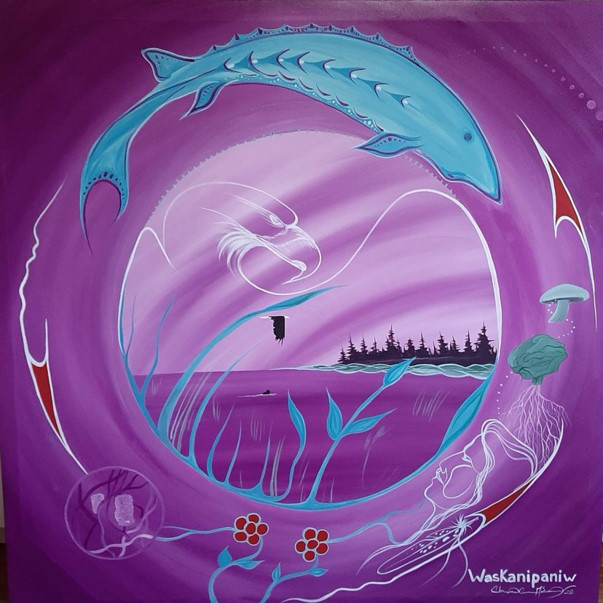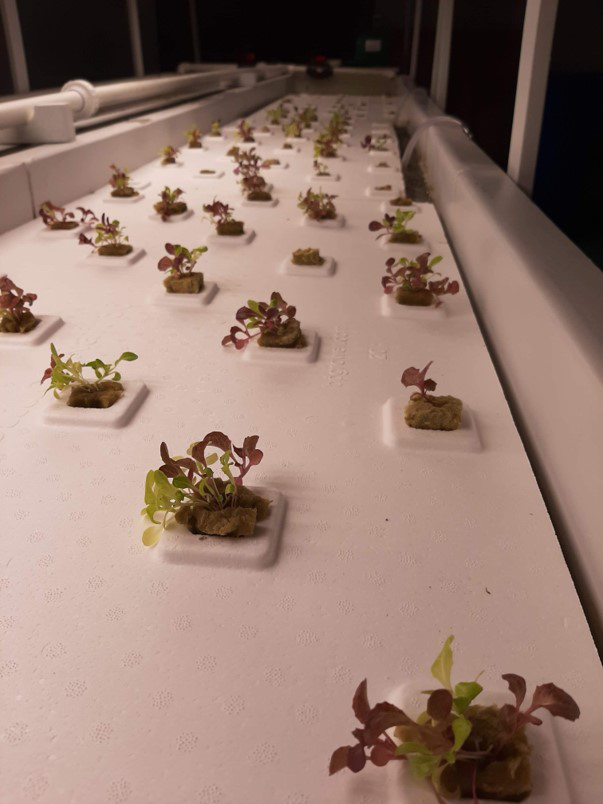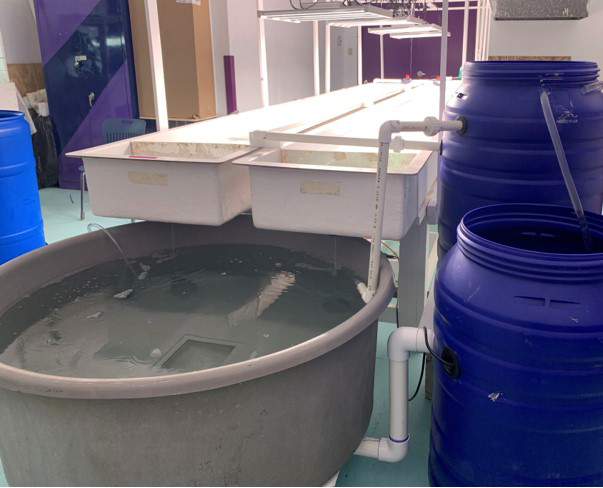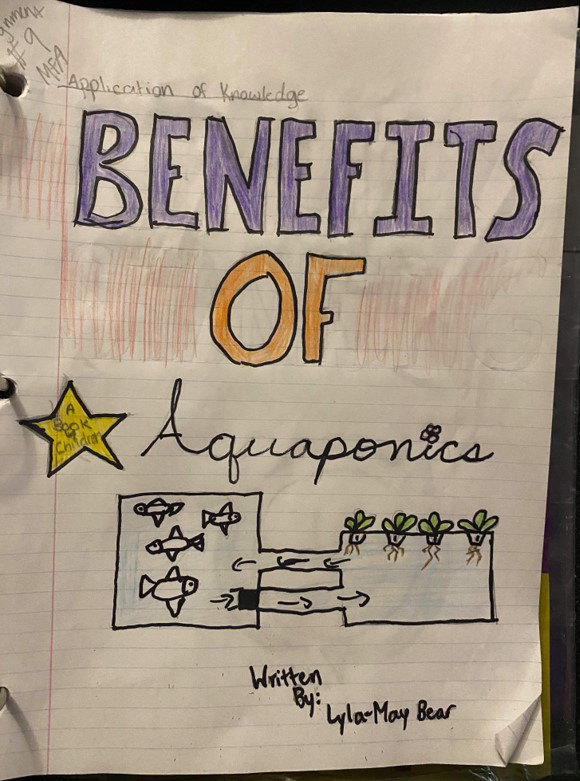
Grand Rapids School, Grand Rapids, MB
Grant term 2020-2022
 At the end of the hallway in Grand Rapids School a sliver of bright light escapes through a gap at the bottom of a closed door. A beacon for curious minds, this particular room stands out from the rest of the closed doors along the hallway. Countless students have passed by this room on their way to their classes, little did they know that the once empty classroom was undergoing a transformation, one that that would go on to not just transform an ordinary classroom into an aquaponics laboratory, but also a transformation of young minds through an innovative new project made possible through the Farm to Cafeteria Canada grants program. Welcome to the Waskanipaniw Aquaponics project.
At the end of the hallway in Grand Rapids School a sliver of bright light escapes through a gap at the bottom of a closed door. A beacon for curious minds, this particular room stands out from the rest of the closed doors along the hallway. Countless students have passed by this room on their way to their classes, little did they know that the once empty classroom was undergoing a transformation, one that that would go on to not just transform an ordinary classroom into an aquaponics laboratory, but also a transformation of young minds through an innovative new project made possible through the Farm to Cafeteria Canada grants program. Welcome to the Waskanipaniw Aquaponics project.

In Cree “Waskanipaniw” means to arrive full circle. The name embodies the very concept of aquaponics in which fish and plants are grown together in a recirculating system. In the project room a large painting is hung on the wall illustrating the circular nature of aquaponics where fish waste is transformed by microorganisms into nutrients available for plant growth.
 During the F2CC grant a group of dedicated teachers, community volunteers and students worked together to experiment with different types of aquaponic systems. Teachers provided engaging lessons to their students using small in-class aquaponic demonstrations and even expanded their daily lesson plans to include growing microgreens. Students found great satisfaction with tasting and sampling their wide variety of freshly sprouted microgreens. Thanks to the donations made by the community partner who works at the Grand Rapids Fish Hatchery, the project team and student volunteers repurposed fish hatchery equipment to build a large-scale floating raft aquaponics system.
During the F2CC grant a group of dedicated teachers, community volunteers and students worked together to experiment with different types of aquaponic systems. Teachers provided engaging lessons to their students using small in-class aquaponic demonstrations and even expanded their daily lesson plans to include growing microgreens. Students found great satisfaction with tasting and sampling their wide variety of freshly sprouted microgreens. Thanks to the donations made by the community partner who works at the Grand Rapids Fish Hatchery, the project team and student volunteers repurposed fish hatchery equipment to build a large-scale floating raft aquaponics system.
 Moving forward and beyond the end of the F2CC grant cycle the school and community partner wish to continue their pursuit of engaging students in growing their own food to stock a cafeteria salad bar for special events such as community feasts and elders’ tea. Students will receive bigger and more in-depth roles and responsibility for the daily operation of plant and fish care, receiving help and direction from teachers. The light in the Waskanipaniw room is warm and inviting, a great environment for growing plants but also for fostering and nurturing the ever-important ideas of community food security and healthy eating. The concept truly has come full circle.
Moving forward and beyond the end of the F2CC grant cycle the school and community partner wish to continue their pursuit of engaging students in growing their own food to stock a cafeteria salad bar for special events such as community feasts and elders’ tea. Students will receive bigger and more in-depth roles and responsibility for the daily operation of plant and fish care, receiving help and direction from teachers. The light in the Waskanipaniw room is warm and inviting, a great environment for growing plants but also for fostering and nurturing the ever-important ideas of community food security and healthy eating. The concept truly has come full circle.




